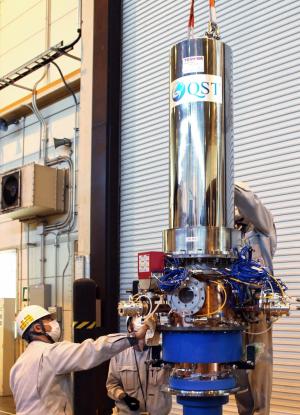Japan develops first high-output, multi-frequency gyrotron
Building off expertise developed in the supply of high-power, high-frequency gyrotrons for the ITER Project and the JT-60SA tokamak, Japan's National Institutes for Quantum and Radioactive Science and Technology (QST) and Canon Electron Tubes & Devices Co., Ltd. (CETD) have invented a world-first—a gyrotron that generates megawatt-class output power and continuous operation at three frequencies.
Gyrotrons are plasma-heating devices that generate high-intensity beams of electromagnetic radiation that correspond to the resonant frequency of electrons. Twenty-four devices are planned as part of ITER's electron cyclotron resonance heating system (ECRH), one of three external heating systems that will bring the ITER plasma to the temperatures required for fusion. The Japanese Domestic Agency, ITER Japan, is supplying 8 of the 24 devices.
The ITER gyrotron design has been optimized for high output power (1 MW, or one million watts) and continuous operation at a single frequency (170 GHz). For a fusion reactor, a gyrotron that can generate microwaves at different frequencies would represent a real advantage. Electrons in the plasma rotate around magnetic field lines at a frequency proportional to the magnetic field strength of the reactor. Because the magnetic field is stronger near the centre axis of the reactor and weaker toward the outside, the resonance frequency of the electrons varies according to location. By creating a gyrotron that can generate megawatt-class output power and continuous operation at multiple frequencies, a wider area can be heated.
The multi-frequency gyrotron developed by the teams at QST and CETD can operate selectively at 104 GHz, 137 GHz or 170 GHz.
It also overcomes a "scattering" problem during transmission (where microwaves outside of the optimized frequency tend to "scatter" at the entrance of the waveguide) by improving on key components such the mode converter and the propagation mirrors. These improvements were shown to suppress microwave scattering at all three frequencies, resulting in high-output (1 MW), triple-frequency, continuous operation (300 s)—a world first.
The achievement paves the way for the development of gyrotrons with three or even more frequencies, capable of plasma heating at various locations in the fusion reactor.


